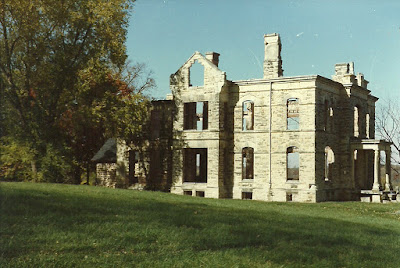STONE CITY IOWA, LATE 1980'S - EARLY 1990'S
Nestled
along the banks of the Wapsipinicon River, is the historic village of Stone
City, Iowa. While most people know of this town from its depiction in the
painting, Stone City, by Iowa artist Grant Wood, the community
actually has a rich history. Founded in 1850, the town was originally set up as a
company town to house the workers for the nearby stone quarries.
The famous painting of Stone City by Iowa artist Grant Wood.
The Blacksmith Shop.
St. Joseph Catholic Church.
The Dearborn home.
In the late
1800’s John Green, Henry Dearborn, and John Ronan, each opened limestone
quarries in the area, and with the westward expansion of the railroad, large
shipments of limestone made their way to neighboring states. From 1859 to 1895
alone, over 150,000 railroad cars of limestone were shipped out of Stone City.
This stone barn housed the draft horses used in the quarries.
The quarry office.
The Ronan house.
The water tower on the Ronan property.
From the
turn of the century to the 1950’s, the use of stone in construction decreased
drastically with the production of Portland Cement, and the thriving little
community of Stone City started to decline, and many of its beautiful stone
buildings were torn down. Fortunately, through the vision of George Nissan,
many of the stone structures were developed and converted into private homes.
Todsy most of the town’s building are listed on the Historical Register.
The front of St. Joseph Catholic Church.
The Green mansion was destroyed by fire in 1963,
and the ruins were torn down in the 1990's.
The General Store.
The Schoolhouse.
***What fun historic villages are in your area?













No comments:
Post a Comment